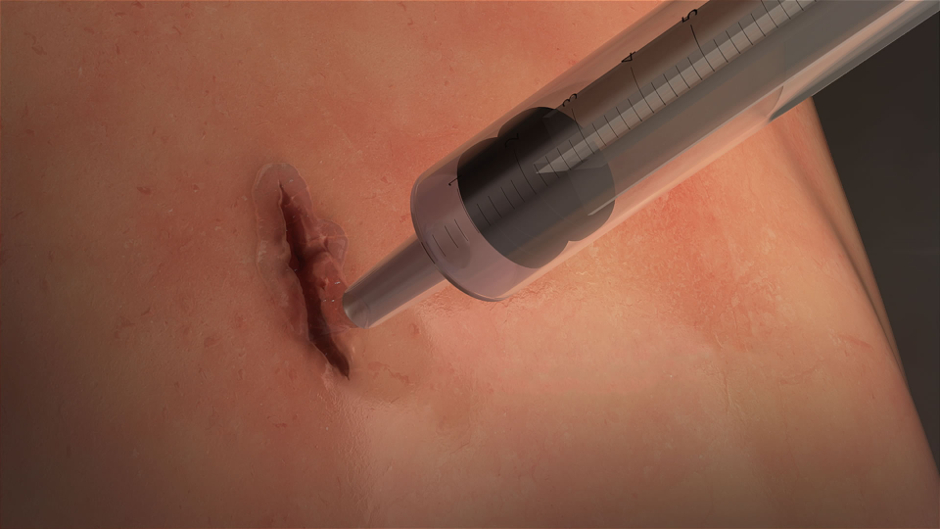
The surgical glue has been developed through a collaboration between biomedical engineers from the University of Sydney and the United States.
MeTro's high elasticity means it is suited to sealing wounds in body tissues that continually expand and relax - such as lungs, hearts and arteries - that are otherwise at risk of re-opening.
According the University of Sydney, the material also works on internal wounds in hard-to-reach areas that have often required staples or sutures due to surrounding body fluid hampering the effectiveness of other sealants.
Cured using UV light, the technology is claimed to set in a minute and has a built-in degrading enzyme that can be modified to determine how long the sealant lasts. This can be hours or months, depending on the wound.
The material has so far been used to seal incisions in the arteries and lungs of rodents and the lungs of pigs, without the need for sutures and staples.
The results have been published in Science Translational Medicine, in a paper by the University of Sydney's Charles Perkins Centre and Faculty of Science; Boston's Northeastern University, the Wyss Institute for Biologically Inspired Engineering at Harvard University and the Beth Israel Deaconess Medical Center (BIDMC) in Boston.
MeTro combines the natural elastic protein technologies developed in collaboration with author and University of Sydney McCaughey Chair in Biochemistry Professor Anthony Weiss, with light sensitive molecules developed in collaboration with author and Director of the Biomaterials Innovation Research Center at Harvard Medical School Professor Ali Khademhosseini.
Lead author of the study, Assistant Professor Nasim Annabi from the Department of Chemical Engineering at Northeastern University, oversaw the application of MeTro in a variety of clinical settings and conditions.
"The beauty of the MeTro formulation is that, as soon as it comes in contact with tissue surfaces, it solidifies into a gel-like phase without running away," she said.
"We then further stabilise it by curing it on-site with a short light-mediated crosslinking treatment. This allows the sealant to be very accurately placed and to tightly bond and interlock with structures on the tissue surface."
The University of Sydney's Prof Anthony Weiss described the process as resembling that of silicone sealants used around bathroom and kitchen tiles.
"When you watch MeTro, you can see it act like a liquid, filling the gaps and conforming to the shape of the wound," he said.
"It responds well biologically, and interfaces closely with human tissue to promote healing. The gel is easily stored and can be squirted directly onto a wound or cavity.
"The potential applications are powerful - from treating serious internal wounds at emergency sites such as following car accidents and in war zones, as well as improving hospital surgeries."
The next stage for the technology is clinical testing, Professor Weiss said.
https://www.theengineer.co.uk/radiopaque-glue-can-seal-wounds-and-guide-surgery/




Poll: Should the UK’s railways be renationalised?
I _do_ remember British Rail - and that it was <i>literally</i> a national joke https://youtu.be/zV2lmSDKvO8